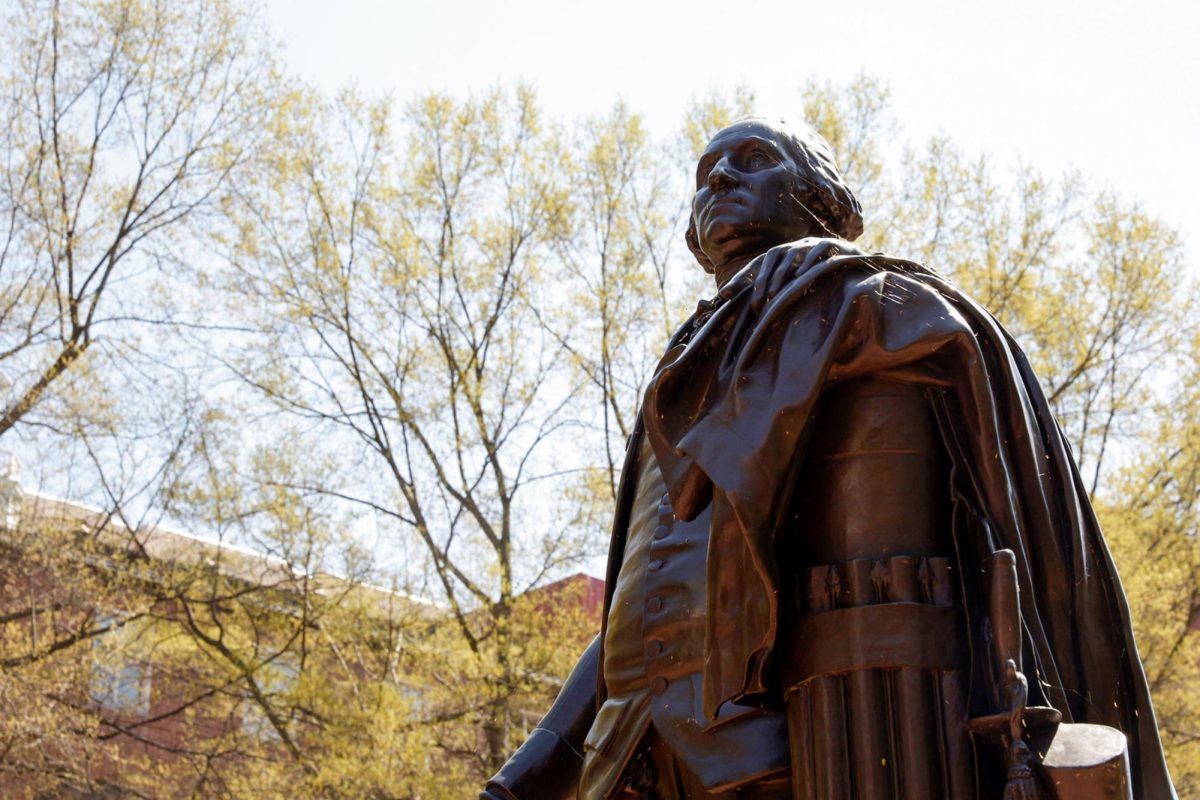Ben Fritz has taught music as an adjunct professor at GW for 18 years and leads the GW student band during the basketball season, but has not seen a pay raise in his base salary since 2001. But during the past six years, the salary of GW’s full-time employees has risen by more than 18 percent.
He said, given his experience and seniority, he would earn as much as $5,000 more teaching in the Fairfax County public school system.
“What keeps me at GW is a need to see ‘what happens next’,” Fritz said. “I am part of an educational family and for better or worse. I’m buff- and blue.The 1,305 part-time professors at GW are paid an average of $3,200 for each course they teach. A University advisory issued in 2001 mandated certain base salaries across disciplines and provided suggested ranges of compensation. Since then, wage growth has stalled.
The low pay leaves GW professors in a precarious situation where they are faced with the dilemma of leaving for more money or staying because of the university environment. The pay also hampers professors from living comfortably in one of the nation’s most expensive cities.
The University says its tiff with the part-time faculty unionization effort has stymied its ability to take a serious look at salary raises.
Part-time faculty taught 46 percent of courses offered last fall, according to University records. Kip Lornell, a full-time adjunct professor in the music department, said part-time salaries accounted for only 1 percent of the University’s total budget.
Compared to other local universities, GW is disproportionately dependent on these instructors. Last year, George Mason University employed 1,022 adjunct professors. By comparison, GW, with nearly 10,000 fewer students, employed 1,436 part-time faculty.
Fritz said the low pay at the University is partially offset by the outstanding interactions with GW students, but it can be “disheartening and de-motivating” for his professional morale.
Lornell, a driving force behind a part-time faculty union unionization effort, said approximately 90 percent of all part-time faculty are paid per course and receive no benefits from the University. A small portion of part-time faculty have been eligible for merit pay increases along with the rest of the University’s faculty.
Since wages have remained constant since 2001, inflation has taken a bite out of teacher pay. A salary of $3,200 per course today, adjusted for inflation, is $2,650 – a pay cut of 17.2 percent per course.
Donald Lehman, executive vice president for Academic Affairs, said the University is aware of the situation.
“We had to be very careful relating to unfair labor practices,” Lehman said.
In 2001, the United Auto Workers moved to unionize the part-time faculty and graduate teaching assistants.
Lehman said it would have been inappropriate to increase adjunct faculty salaries during the union movement.
“We could be accused of trying to stymie the union effort,” Lehman said.
Lehman said GW made an effort to remain competitive with other area universities for salary growth throughout the 1990s, but the failure to settle the unionization question has left GW in a bind.
Although the UAW attempt to unionize did not succeed, its efforts were immediately picked up by the Service Employees International Union, which has sought to organize part-time faculty.
As a result, Lehman said there has not been a period since 2001, when the University could act on part-time faculty salaries since 2001.
Contract negotiations between the union and GW are ongoing and both sides say that a lot of progress has been made, although the critical question of salaries has yet to be resolved.
“The University has negotiated in very good faith,” Lornell said. “There has been plenty of give and take on both sides.”
Part-time instructors are broken down between adjunct professors – regular part-time professors, who teach a full course load on a recurring basis – and “lecturers,” who typically instruct one or two courses each year.
About 100 of the part-time faculty – fewer than 10 percent – are designated as adjunct professors. These faculty members are on yearly agreements and teach at least two courses a semester. They are eligible for partial benefits from the University.
The vast majority of the part-time faculty are lecturers, often local professionals who draw on their careers and experience to provide a unique instructional value.
In addition to the unique learning experience that part-time faculty can provide, Lehman said, they also help the University keep its instruction flexible and allow it to respond to changing demands for the classroom, particularly in foreign language courses.
“They bring a whole other dimension to the education for the students,” Lehman said. “It’s a big part of what makes GW special.”







